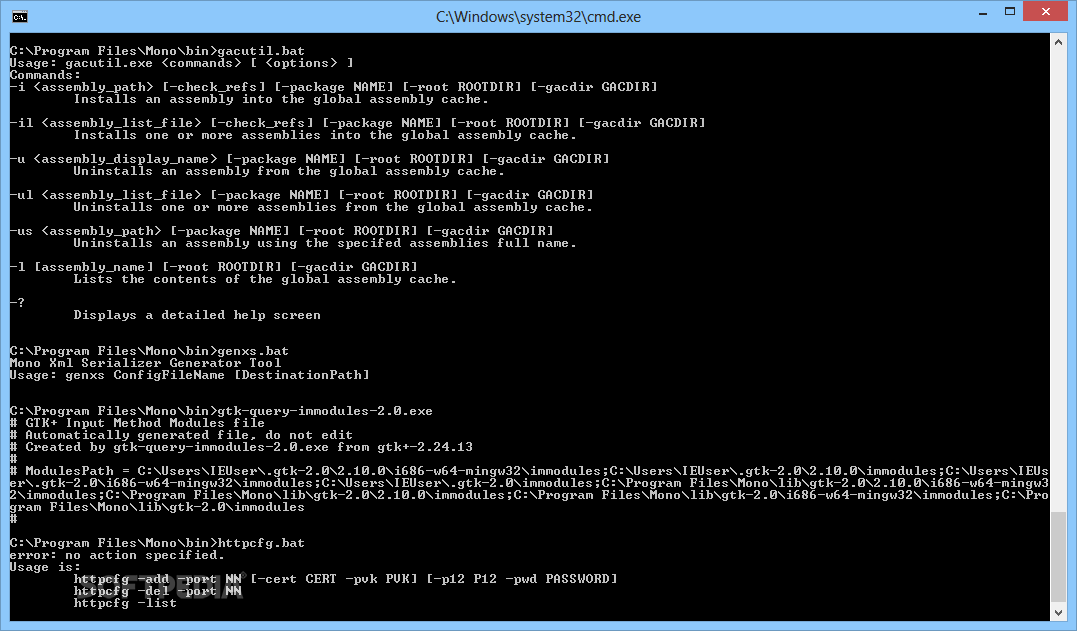Mono Framework Download For Mac
Introduction to Mono on macOS
2020-9-21 Installing Mono on macOS is very simple: Download the latest Mono release for Mac; Run the.pkg file and accept the terms of the license. Mono is now installing: After the installation completed successfully, it’s a good idea to run through the basic hello world examples on this page to verify Mono is working correctly. 2020-2-17 Fiddler 版本历史Fiddler著名的抓包工具,就不多说了。在Mac上使用Fiddler也是血泪史,2016年出过Fiddler for OS X Beta 1, 必须通过Mono才可以在Mac上使用。但是在mac上使用是非常不稳定, 有非常多的问题.现在终于有”Fiddler Everywhere“ 版本.
Mono supports macOS version 10.9 (Mavericks) and later.
You can use Mono on macOS to build server, console and GUI applications. Read below for the options available for GUI application development.
If you are interested in creating native GUI applications, use the MonoMac bindings and our MonoDevelop add-in. Read the description on MonoMac for more information on how to get started.
Installing Mono on macOS
You can use Mono either as a runtime to run existing application, or as an SDK to develop new applications with Mono.
Mono Mac 6
Visit the download page to find the latest macOS package. Run it and follow the instructions there, you can either get a basic runtime, or a complete runtime plus a software development kit.
If you plan on developing applications with Mono, we suggest that you also install the MonoDevelop IDE after you install Mono.
The Mono package includes:
- The Mono Runtime
- GUI Toolkits: Windows.Forms and Gtk# for macOS.
- Note: the MonoMac GUI toolkit for native macOS GUI development is currently a separate download.
- SDK: C#, Visual Basic compilers, assemblers and tools
- XSP ASP.NET server
- Manual pages.
This package installs as a framework into /Library/Frameworks/Mono.framework (the same way the Java packages are installed). The executable binaries can be found in /Library/Frameworks/Mono.framework/Versions/Current/bin. If you’d like to access the mono manpages you’ll have to add /Library/Frameworks/Mono.framework/Versions/Current/man to your manpath. The macOS Mono package does not include Gtk#, XSP or mod_mono. These will have to be compiled from source.
Our packages currently require macOS 10.9 or better, for older versions, you will need to build from source code.
Using Mono on macOS
At this point, you must use Mono from the command line, the usual set of commands that are available on other ports of Mono are available.
To build applications you can use “mcs”, to run then you can use mono.
Mono Fiddler
From a Terminal shell, you can try it out:
Most users would be using the MonoDevelop IDE to create their projects.
You will have a choice of GUI toolkits for building your application, from pure cross platform, to Mac-specific using MonoMac.
32 and 64 bit support
The Mono packages published on this web site provide both a 32-bit and a 64-bit Mono VM.
Starting from Mono 5.2 the mono command defaults to 64-bit, you can use the --arch=32/64 switch to control the bitness.
The 64 bit support has a few limitations today:
- Our Windows.Forms implementation uses Carbon, and as such, it would not work with a 64-bit Mono.
Building Client Applications
Variations audio timeliner mac download cnet. There are a few choices to build client applications on macOS, you should pick the technology that better fits your goals, your choices are:
| Toolkit | Runs on Linux | Runs on Windows | Runs on Mac | Binding Style | License | Status |
| MonoMac | no | no | yes | Strongly typed C# binding to Cocoa APIs | MIT X11 | Actively developed, builds on the design lessons from MonoTouch but still incomplete. This will be the new default binding for Mono on macOS. Separate download. |
| Gtk# | yes | yes | yes | Strongly typed C# binding to the cross platform Gtk+ API. Applications look foreign on macOS. | LGPL v2 | Actively developed, cross platform. Bundled with Mono. |
| Windows.Forms | yes | yes | yes | Cross platform implementation of Microsoft’s Windows.Forms. Applications look foreign on macOS. | MIT X11 | The Windows.Forms API was frozen in time by Microsoft. Bundled with Mono. |
| MonObjc | no | no | yes | Binding to the native Cocoa APIs, but requires manual use of Objective-C selectors to work with, relatively thin wrapper around the underlying APIs. | LGPL v3 | Actively developed. Separate download. |
| CocoaSharp | no | no | yes | Binding to the native Cocoa APIs, but requires manual use of Objective-C selectors to work with, relatively thin wrapper around the underlying APIs. | MIT X11 | No longer developed, no longer maintained, deprecated. Bundled with Mono. |
Running Mono applications on macOS
Running applications on macOS is very similar to linux systems, from the terminal:
The Environment and History pane is in the upper right. The Windows-related URL also links to “Installation and other instructions.”. Update rstudio mac. When installation is complete, Windows users see an R icon on their desktop, Mac users see it in their Application folder.Both URLs provides helpful links to FAQs. The other two panes provide helpful information as you work with R. In either case, follow the usual installation procedures.
For GTK# applications, it’s easiest to run them the same way but using xterm from X11.app
Windows.Forms
Mono’s implementation of the System.Windows.Forms API is built on top of Carbon and can only run with Mono on 32 bit systems. The look and feel of System.Windows.Forms applications mimics the Windows style and does not currently render like a native macOS application.

Third Party Libraries
ObjC# is a transparent two way bridge that allows the CLR to access the rich underlying ObjectiveC frameworks as well as providing direct access to the CLR frameworks from the ObjectiveC language.
Uninstalling Mono on macOS
Run this script in a terminal: